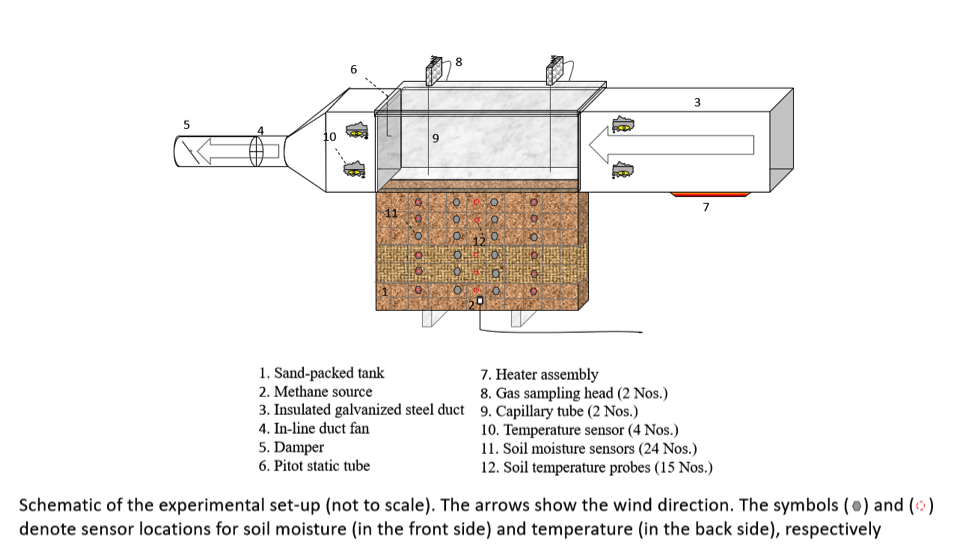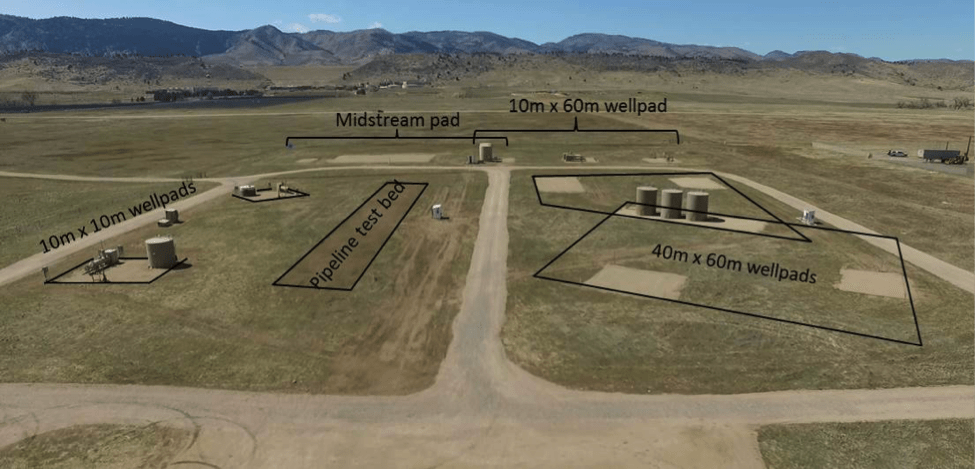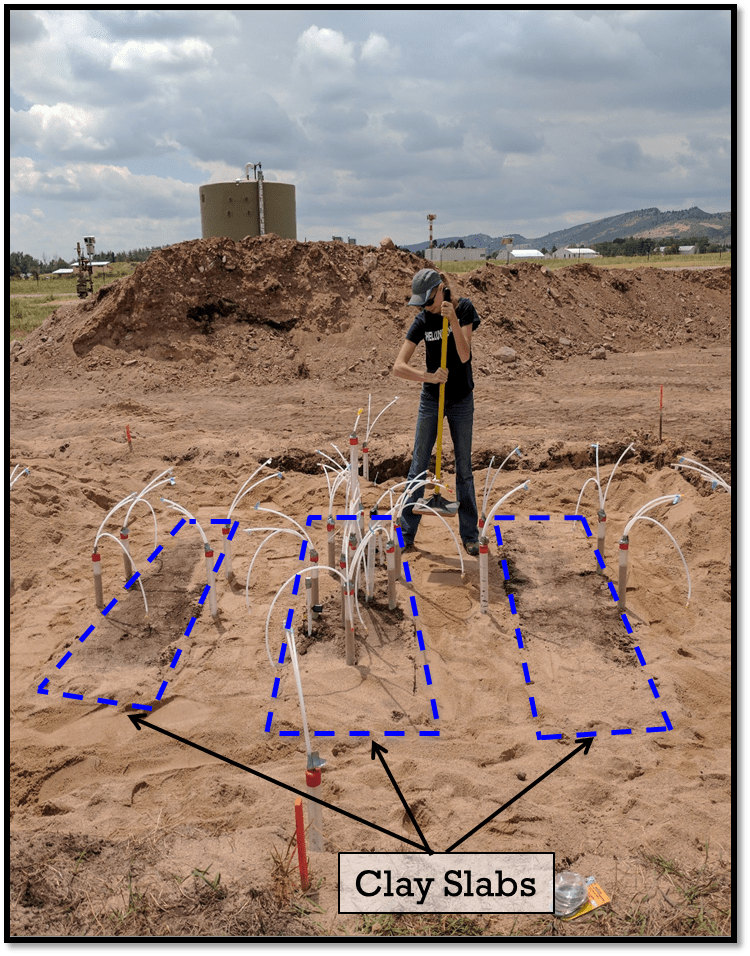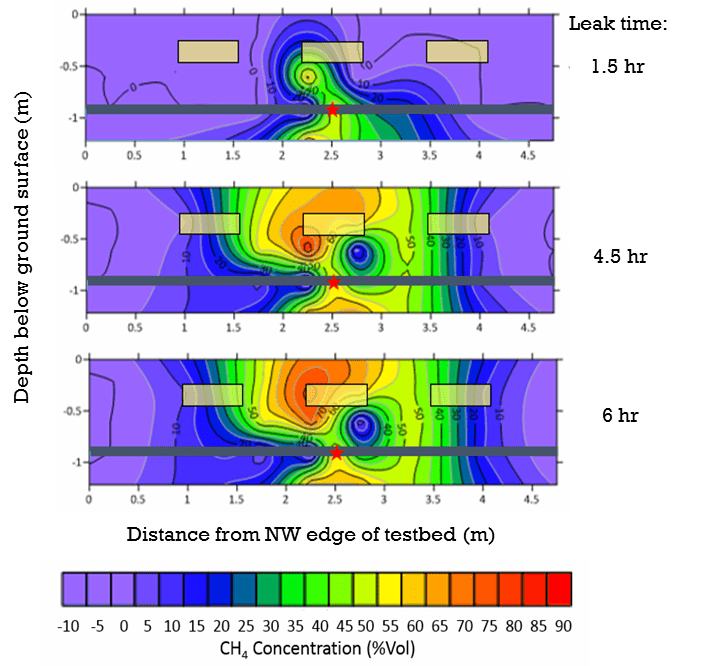Effect of subsurface soil moisture variability and atmospheric conditions on methane gas migration in shallow subsurface
From Chamindu Deepagoda T.K.K., Kathleen M. Smits, and Curtis M. Oldenburg 2016, “Effect of subsurface soil moisture variability and atmospheric conditions on methane gas migration in shallow subsurface” published in the International Journal of Greenhouse Gas Control. http://www.sciencedirect.com/science/article/pii/S1750583616307460
Purpose:
In this work, we investigated multiphase processes controlling migration of methane from a point source representing a buried pipeline leaking at fixed flow rate (kg/s) under various saturation and soil-texture conditions. In addition, potential effects of atmospheric boundary controls, wind (0.5 and 2.0 m s-1) and temperature (22 and 35 °C), were also examined.
Experimental Methods:
This work was accomplished through a series of controlled bench-scale experiments using a large porous media tank interfaced with an open-return wind tunnel.

Select Results:
Results showed the distinct effects of soil heterogeneity and, to a varying degree, of soil moisture on surface methane concentrations. In addition, results also showed the pronounced effects of wind and, to a lesser degree, of temperature on surface methane concentrations in the presence of varying soil and moisture conditions.
Field Scale Subsurface Methane Diffusion Study at CSUs Methane Emission Technology Evaluation Center(METEC)
The METEC facility is part of CSU’s Energy Institute, built to evaluate the performance of sensor technologies developed by the Department of Energy’s ARPA-E MONITOR program. The test site (Figure 1) allows for the simulation of gas leakage from real-world natural gas operations at production and midstream facilities as well as underground natural gas pipelines.

The METEC pipeline test bed (Figure 2) allows for the simulation of underground pipeline leaks at known leakage rates in varying subsurface and surface conditions. This test bed provides a unique opportunity to study the ability of detection technologies to identify and quantify leaks based on differences in subsurface (e.g. soil moisture, soil type, heterogeneity), surface (e.g. pavement, vegetation, standing water) and atmospheric (near-surface wind and temperature) conditions. All subsurface and surface conditions can be continuously monitored using soil moisture, temperature, pressure, humidity and wind speed sensors installed throughout the site. This test bed is an ideal location to evaluate leak detection sensitivities and detection limits, and to develop recommended practices for subsurface leak detection.




For more information on the background for this project please visit: https://arpa-e.energy.gov/?q=slick-sheet-project/monitor-field-test-site
Funding Sources: Pipeline and Hazardous Materials Safety Administration (PHMSA), Advanced Research Projects Agency-Energy (ARPA-E) Methane Observation Networks with Innovative Technology to Obtain Reductions (MONITOR)